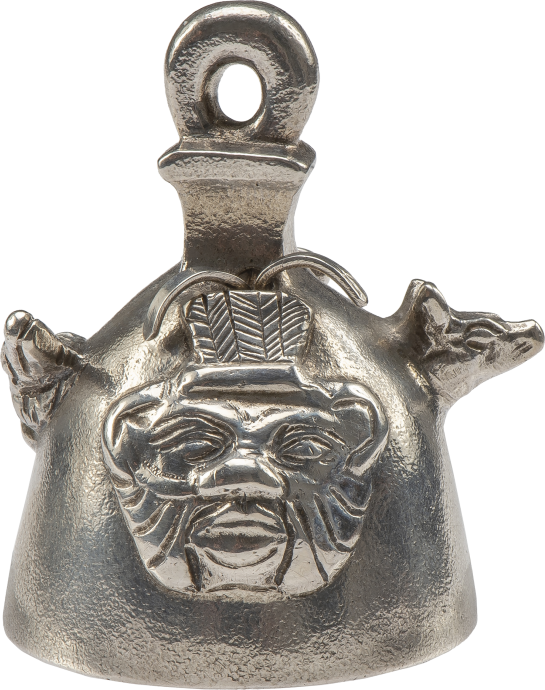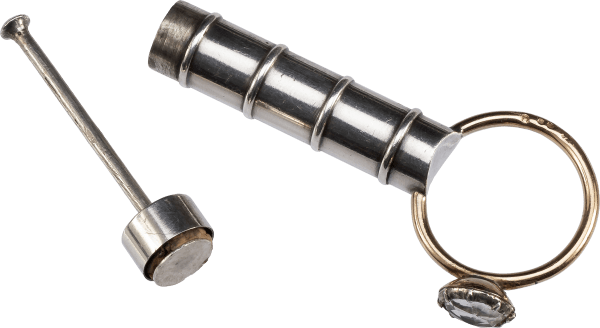


Bell
, England (London), 1880


Bell
Description
Cast silver egg-shaped bell with clapper and a rectangular knob with a pendant loop as a handle. On the outer surface are four protruding heads of the God Bes, a jackal, a ram’s head, and a crocodile. Inside the bell are the maker’s mark, an oval punch with the initials “CG,” and four other marks (from left to right): a lion passant (quality standard), a leopard’s head (London assay office), date letter ‘E’ (1880), and head of Queen Victoria.
This small, but substantial silver bell is an exceptional object even for an exceptional jeweler like Carlo Giuliano. Perhaps apprenticed with the Castellani in Rome, Carlo Giuliano had premises in London in Frith Street, Soho, from about 1860 and then on Piccadilly from 1874. He was a special favorite of Queen Victoria and the Pre-Raphaelite painters. Like the Castellani, Giuliano was renowned for “archaeological-style” jewels.
Not a jewel per se, this charming work quotes directly from an Egyptian object that Giuliano probably saw in the British Museum. The Victorians displayed an abiding fascination with all things Egyptian; excavations throughout the nineteenth century culminating in that of Giza by the renowned Egyptologist Sir William Matthew Flinders Petrie (1853–1942) flooded the English market with artefacts. The present object is based on a bronze bell probably from the Ptolemaic period acquired by the British Museum in 1838 (EA 38160). Similar examples entered the Museum in the 1880s from a group excavated by Flinders Petrie in Naukratis in Lower Egypt (1888,061.8 and 1885,1101.101).
Bells played an important role in Egyptian music, their pleasing sound thought to protect against evil spirits. Here the four sculptural figures along the sides of the bell had amuletic properties: the god Bes being the protector of households, mothers, and childbirth; the crocodile was associated with Sobek, the god of the Nile and fertility; the jackal with the god Anubis who protected the dead; and the ram with the creator god Khnum and fertility. Marks confirm Carlo Giuliano as the maker and 1880 as the date.
Literature:
Munn 1984, p. 120, 129; Robert D. Anderson, Catalogue of Egyptian Antiquities in the British Museum, vol. III, London, 1976, no. 37.
